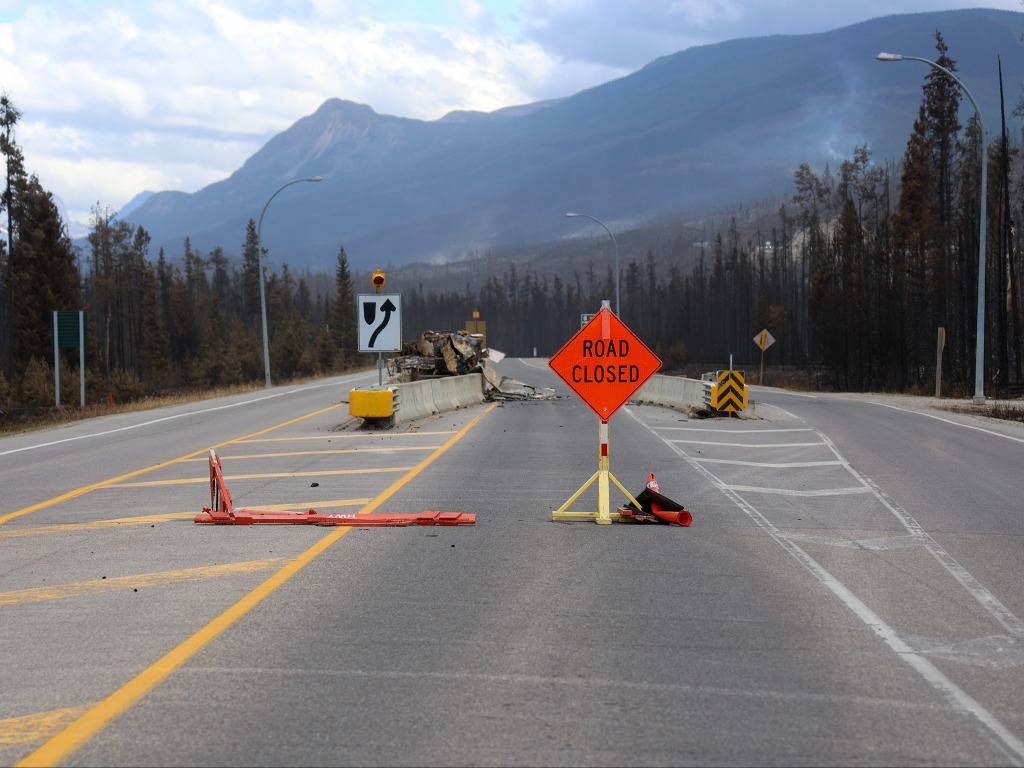Tourism stakeholders talk mitigation measures as wildfires continue in Jasper

Jasper residents and business operators are now picking up the pieces in the aftermath of the wildfires that swept through parts of their town, and wondering what measures can be taken to prevent future fires.
Jasper National Park remains closed, as wildfires in a large region south of the town continue to burn out of control, say recent news reports. Highway 16 connecting Jasper to Edmonton and Lloydminster was closed, but has been reopened to commercial traffic.
Hotspots near Pyramid Lake north of Jasper are the focus of some fire fighting measures, and fireguards are being constructed between Pyramid Lake and Hwy. 16. There are also hotspots near the Fairmont Jasper Park Lodge that have required fire fighting resources.
“A comprehensive evaluation is still underway to fully understand the impact across the 700-acre resort, including the golf course,” said Anastasia Martin-Stilwell, regional director of public relations for Fairmont Hotels & Resorts. “We can confirm that several structures significant to our 100-year history have been spared from the active wildfire, including landmarks such as the Main Lodge, Point Cabin, Outlook Cabin and Golf Clubhouse. As we navigate through the aftermath of the devastation, we remain committed to restoring and rebuilding Fairmont Jasper Park Lodge.”
Impact of wildfires on tourism
Some perspectives with a longer future timeline on fire mitigation were provided by industry stakeholders, including Jean Hébert, executive director of the Canadian Association of Tour Operators, and Brett Walker, CATO board chair.
They note that the wildfires in western Canada have had a significant impact on the tourism industry in the region, and that CATO recognizes the importance of addressing climate change to ensure the long-term sustainability of the tourism industry.
“As tour operators, we have a responsibility to promote sustainable practices and advocate for policies that mitigate the effects of climate change,” says CATO. It urges “all stakeholders in the tourism industry to prioritize sustainability and take proactive measures to address the challenges posed by climate change.”
Working together
CATO says that it is committed to working with its members, partners and government agencies to support affected communities, promote resilience and raise awareness about the importance of environmental conservation. “Together, we can build a more resilient and sustainable future for our industry and our planet.”
The case for wildfire prevention and mitigation was presented by Jesse Zeman, the executive director of the B.C. Wildlife Federation, who noted that the Alberta/Jasper wildfire experience is instructive to tourism stakeholders in British Columbia.
“This is a five-alarm wake-up call,” said Zeman. “We are chasing the problem rather than getting ahead of it. Like many of B.C.’s most destructive wildfires, excess fuel on the forest floor around Jasper created a super-heated maelstrom of flame that reached 400 feet high.”
“Attempts to reduce the fuel load were timid at best. Between 2015 and 2017, 733 hectares of the 1,000,000-hectare Jasper National Park were treated with controlled burns to reduce the fuel load. What happened to Jasper is happening over much of B.C.”
Zeman continued that “British Columbia has been agonizingly slow to tackle fuel loads and every summer we spend billions of dollars fighting fire and then cleaning up the mess. We are getting it backwards. Firefighting may save a few houses and commercial timber, but it isn’t solving the problem.”
Photo courtesy of Jasper National Park
Tags: Jasper


